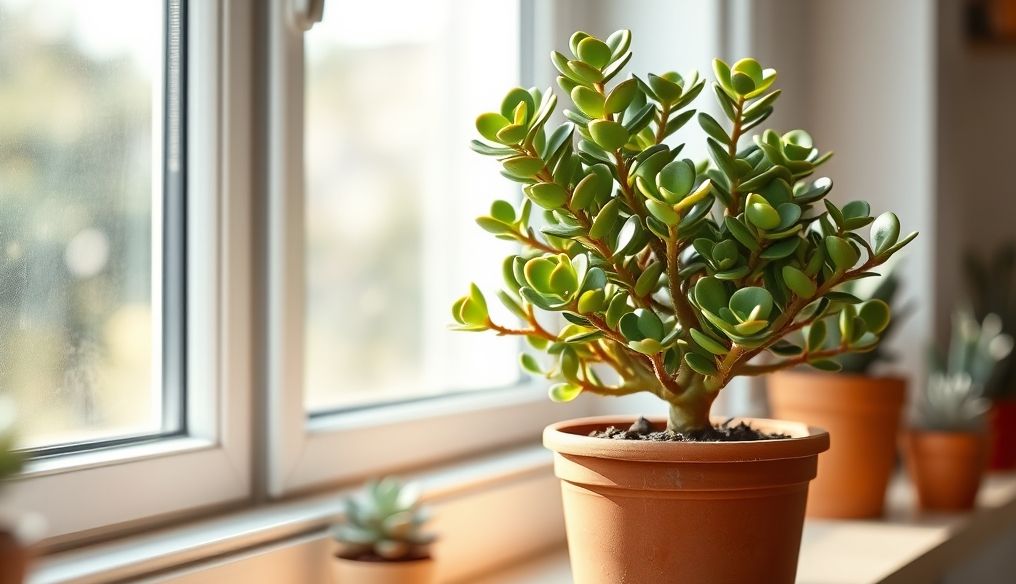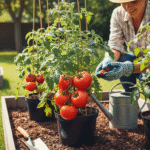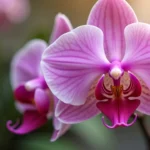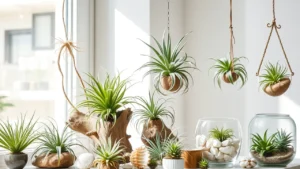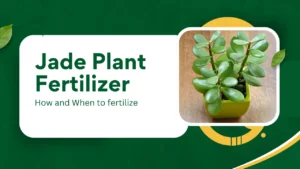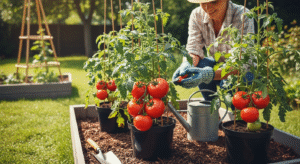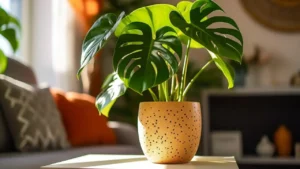If there’s one plant that perfectly balances beauty, resilience, and symbolism, it’s the jade plant (Crassula ovata). With its glossy, oval-shaped leaves and tree-like structure, this charming succulent is often celebrated as a symbol of prosperity, friendship, and good luck. It’s no wonder it’s fondly known as the “money plant” or “lucky plant” in many homes around the world.
As a horticulturist who has nurtured jade plants for over two decades, I can confidently say that few houseplants reward care and patience quite like this one. Whether placed by a sunny window or in your office corner, a healthy jade plant adds not just greenery but also positive energy to your space.
Let’s explore exactly how to care for a jade plant, keep it healthy year-round, and help it grow into a stunning, long-lived indoor companion.
Table of Contents
🌿 Jade Plant Overview
The jade plant is a perennial succulent native to South Africa and Mozambique, where it thrives in arid, rocky environments. Its fleshy, emerald-green leaves store water, allowing it to survive long dry spells — a trait that makes it one of the most low-maintenance indoor plants you can own.
With time, the jade plant develops a thick, woody stem, giving it a miniature tree-like appearance. When well cared for, mature plants may even reward you with clusters of small, star-shaped white or pink flowers during winter — a true delight for any gardener.
🌱 Jade Plant Quick Care
| Aspect | Details |
|---|---|
| Scientific Name | Crassula ovata |
| Common Name | Jade Plant, Money Plant, Lucky Plant |
| Native Region | South Africa and Mozambique |
| Light Requirements | Bright, indirect sunlight (4–6 hours daily) |
| Watering Needs | Water deeply; allow soil to dry between watering |
| Propagation | Leaf or stem cuttings |
| Toxicity | Mildly toxic to pets (cats and dogs) |
| Growth Rate | Slow to moderate |
| Ideal Temperature | 18°C – 24°C (65°F – 75°F) |
🌱 Jade Plant Requirements
| Feature | Details |
|---|---|
| Hardiness | USDA Zones 10–11 |
| Climate Zones | Warm, dry climates |
| Plant Type | Succulent perennial |
| Plant Family | Crassulaceae |
| Plant Genus | Crassula |
| Season of Interest | Year-round foliage; winter blooms |
| Height | Up to 3–4 feet indoors |
| Spread | 2–3 feet wide |
| Spacing | Minimum 12–18 inches apart |
| Depth | Shallow-rooted; plant at same depth as nursery pot |
| Maintenance | Low |
| Soil Type | Well-draining cactus or succulent mix |
| Soil pH | Neutral to slightly acidic (6.0–7.0) |
| Soil Drainage | Excellent drainage is essential |
🌞 Jade Plant Light Requirements
Jade plants love bright, indirect sunlight and can handle a few hours of gentle morning sun each day. If grown indoors, place your plant near a south- or west-facing window where it can bask in 4–6 hours of natural light.
However, too much harsh afternoon sun can scorch the leaves, especially during summer. If your jade plant’s leaves start turning red or brown on the edges, it’s a sign of sun stress — move it to a slightly shadier spot.
🌿 Pro Gardener Tip: Rotate your jade plant every few weeks to encourage even growth and prevent it from leaning toward the light.
💧 Jade Plant Watering
Watering jade plants correctly is where most beginners struggle. Remember — it’s better to underwater than overwater a jade plant.
Allow the soil to dry out completely between watering, then water deeply until you see excess water draining from the bottom. During winter or cooler months, reduce watering significantly, as the plant’s growth slows down.
Overwatering leads to root rot, the most common cause of jade plant decline. Always ensure the pot has drainage holes and avoid leaving water in the saucer.
🌿 Pro Gardener Tip: Stick your finger one inch into the soil — if it feels dry, it’s time to water. If it’s still damp, wait a few more days.
🌱 Jade Plant Soil
The ideal soil for a jade plant is light, fast-draining, and slightly gritty. Use a succulent or cactus mix, or create your own blend using:
- 2 parts potting soil
- 1 part coarse sand or perlite
- 1 part pumice or fine gravel
Avoid heavy, moisture-retentive soils that stay wet for too long. Good aeration ensures the roots breathe and stay healthy.
🌿 Pro Gardener Tip: Adding a handful of pumice improves drainage and prevents fungal root issues.
Best Pot for Jade Plant
Jade plants prefer terracotta or clay pots because they allow moisture to evaporate and prevent soggy roots. The pot should always have drainage holes to release excess water.
Avoid oversized pots — jade plants thrive when slightly root-bound. Choose a pot that’s just one size larger than the current root ball.
🌿 Pro Gardener Tip: Terracotta pots not only help control moisture but also provide stability for the jade plant’s top-heavy growth.
🌿 Repotting Jade Plant
Jade plants grow slowly, so repotting every 2–3 years is sufficient. The best time to repot is in spring or early summer when the plant begins active growth.
When repotting:
- Remove the plant gently and inspect the roots.
- Trim any dead or rotting roots.
- Place it in fresh, well-draining soil at the same depth as before.
🌿 Pro Gardener Tip: After repotting, wait a week before watering to allow any damaged roots to heal.
🌤️ Jade Plant Temperature
Jade plants thrive between 18°C to 24°C (65°F to 75°F). They can tolerate slightly cooler nights but should be kept above 10°C (50°F).
Avoid placing them near cold drafts, heaters, or air conditioners. Sudden temperature changes can cause leaf drop.
🌿 Pro Gardener Tip: In winter, keep your jade plant away from window panes that get chilly overnight.
💨 Jade Plant Humidity Requirement
Jade plants prefer low to moderate humidity — ideal for most indoor environments. Too much humidity can increase the risk of fungal diseases.
🌿 Pro Gardener Tip: Good air circulation around the plant helps prevent mealybugs and mold growth.
✂️ Jade Plant Pruning
Pruning helps maintain shape, encourages branching, and prevents legginess. Use clean, sharp scissors or pruning shears to trim leggy stems in spring or early summer.
You can propagate the cuttings easily — just let them callous over for a few days before planting in dry soil.
🌿 Pro Gardener Tip: Never throw away jade cuttings — they root easily and make perfect gifts!
🌿 Jade Plant Fertilizer
Feed your jade plant with a diluted, balanced liquid fertilizer (10-10-10) once every 4–6 weeks during spring and summer. Avoid fertilizing in winter when the plant is dormant.
Over-fertilizing can harm the roots, so always feed lightly and infrequently.
🌿 Pro Gardener Tip: Use half-strength fertilizer to avoid salt buildup in the soil.
🐛 Jade Plant Pests and Diseases
Common jade plant pests include mealybugs, aphids, and spider mites. Check under leaves regularly and wipe pests away with a cotton swab dipped in 70% isopropyl alcohol.
Overwatering can lead to root rot and powdery mildew, so keep the plant’s environment dry and well-ventilated.
🌿 Pro Gardener Tip: A monthly neem oil spray helps keep pests and fungal issues at bay.
🌸 Conclusion
Caring for a jade plant is both simple and deeply rewarding. With the right mix of sunlight, soil, and careful watering, this resilient succulent will thrive for decades — even becoming a living heirloom passed from one generation to the next.
Remember: jade plants don’t just add beauty to your home; they symbolize growth, luck, and longevity. So whether you’re a beginner or a seasoned gardener, now is the perfect time to start growing your own lucky jade and watch prosperity take root in your life.
🌿 Pro Gardener Tip: The more love and attention you give your jade plant, the more it grows — both in size and symbolism.

